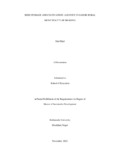
Please use this identifier to cite or link to this item:
https://hdl.handle.net/20.500.14301/116| Title: | SEED STORAGE AND CULTIVATION: A SURVEY IN GAJURI RURAL MUNICIPALITY OF DHADING |
| Authors: | Rijal, Sital |
| Citation: | Rijal,S.(2022)Seed cultivation and storage: A survey in gajuri rural municipality. |
| Issue Date: | Nov-2022 |
| Publisher: | School of Education |
| School: | SOED |
| Department: | DODE |
| Level: | Masters |
| Abstract: | Production, selection, and storage of the grain seeds used for cultivation in Nepal have two ways: traditional and modern. Traditional ways of storage and re-use of seed depend upon indigenous and traditional techniques whereas modern techniques depend upon the different agencies performing scientific agricultural breeding and storage techniques. Despite many policies and programs by the agencies, farmers are reluctant to use tradition sources of seed production, storage and cultivation. So, this study aimed to determine the major varieties and sources of seed farmers are using for cultivation, to find to what extent the cultivated varieties are stored and to find out whether the stored seeds are cultivated or not at local level. The research featured post-positivist approach surveying 171 households by systematic random sampling in Jarebagaiccha and Milanatar village of ward no 6 in Gajuri Rural Municipality of Dhading. Scale of the study was constructed utilizing literature review, in depth interviews; study of previous surveys. The researcher usedSPSS version 26 for analyzing and drawing the findings of the 11 cultivated crops including Dhan (rice), Makai (maize), Kodo (millet), Gahun (wheat), Tori (mustard), Aalu (potato), Mass(black lentil), Bodi (cowpea), Bhatmash (soybean) , Simi (beans) and Masyang (masyang beans). The findings determined the majority of the farmers cultivated local varieties of crops by using the informal sources of seed and stored the seed at their own home. Study further highlighted only four local varieties (soybean, bodi, potato, mustard) were acquired from agrovet by least of the farmers. The hybrid varieties those were cultivated had a formal sources, and none of the hybrid varieties were stored. The farmers stored nine local varieties using the traditional method for cultivation. This study provided an insight to seed industries to supply seeds required to the local farmers. The study further paves the path for the local government and non-governmental organizations to help the farmers by establishing a community seed bank to preserve the varieties and store the seed by blending the traditional techniqueand scientific method. Keyword: Seed Cultivation, Seed Storage, Sources, Varieties |
| URI: | http://101.251.6.110:8080/handle/20.500.14301/116 |
| Appears in Collections: | Research Project |
Files in This Item:
| File | Description | Size | Format | |
|---|---|---|---|---|
| Sital Rijal, MSD final thesis.pdf | 1.3 MB | Adobe PDF |  View/Open |
Items in DSpace are protected by copyright, with all rights reserved, unless otherwise indicated.